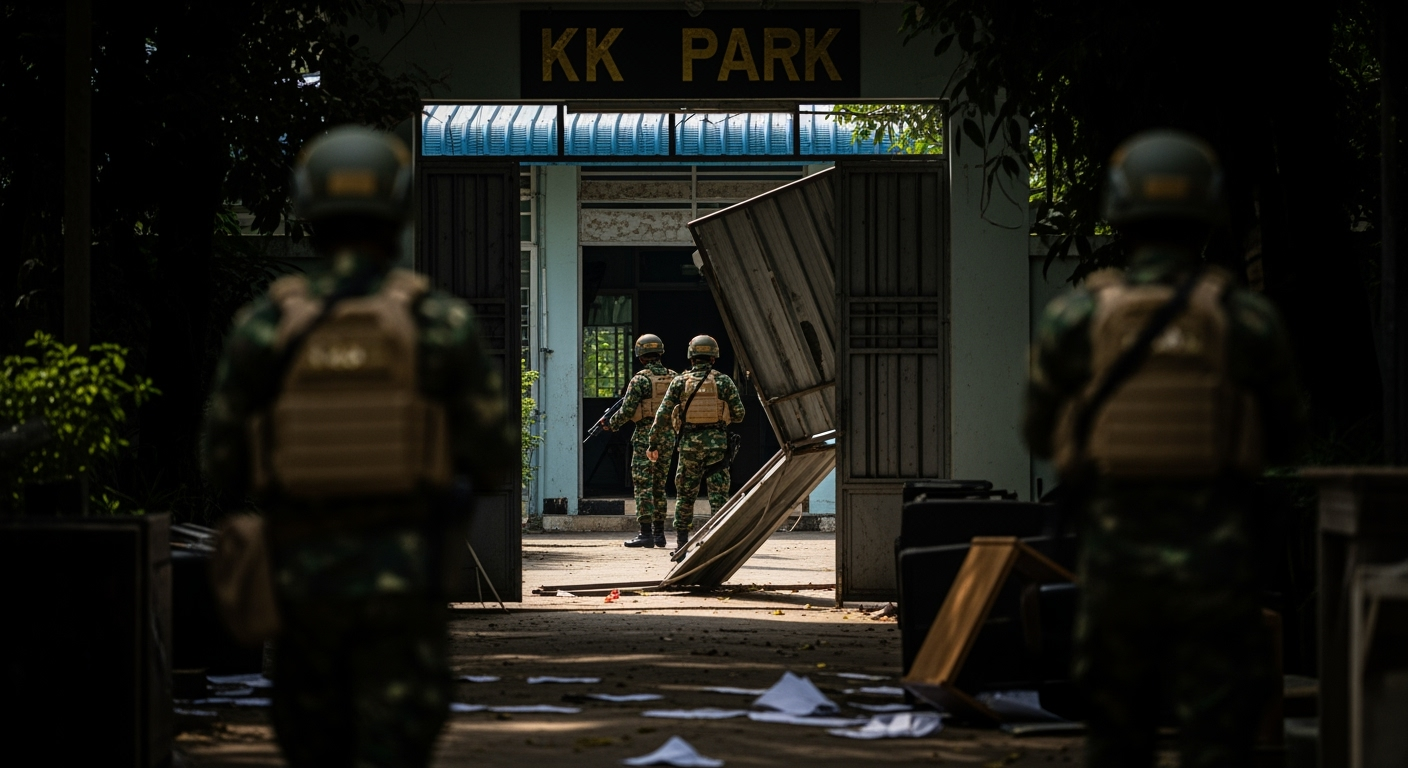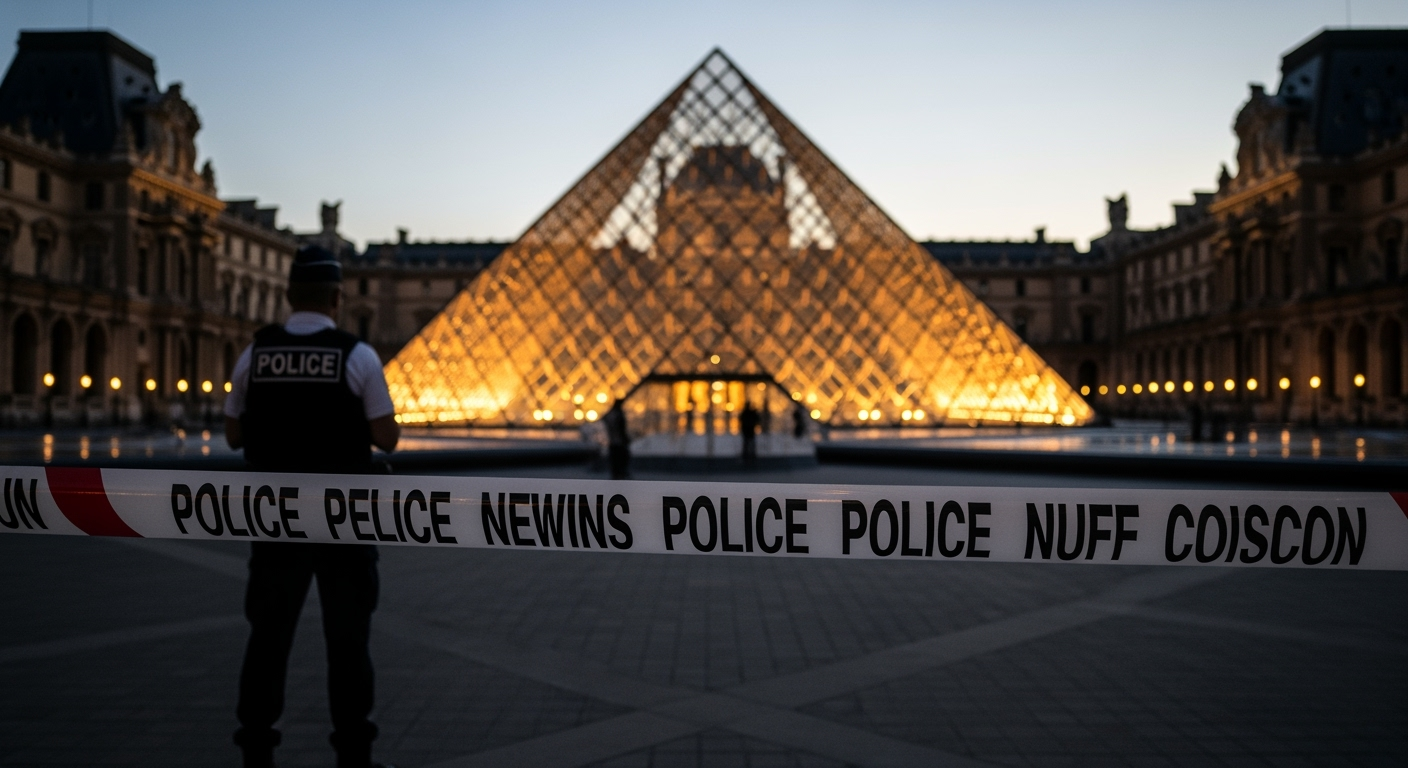Related Articles

Virginia Giuffre's Posthumous Memoir Intensifies Pressure on Prince Andrew and British Monarchy

Diplomatic Tightrope: Vance in Israel as Gaza Truce Teeters on the Brink





Paris, France – The world-renowned Louvre Museum in Paris abruptly closed its doors on Sunday, October 19, 2025, following a reported robbery that sent shockwaves through the international art community and prompted an immediate police investigation. French Culture Minister Rachida Dati confirmed the incident, reassuring the public that there were no injuries sustained during the brazen daylight heist. The closure forced thousands of visitors, many of whom had pre-booked tickets, to alter their plans, marking a rare and concerning disruption at one of the globe's most visited cultural institutions.
The incident unfolded during the museum's opening hours, with thieves targeting a specific collection within the sprawling complex. The swift response from authorities and the museum's decision to close for the day underscore the gravity of the event, which highlights persistent challenges in safeguarding invaluable cultural heritage, even within heavily secured environments.
Preliminary reports indicate that the perpetrators executed a sophisticated and audacious plan to gain entry into the Louvre. The thieves reportedly exploited renovation work currently underway on the Seine embankment side of the museum, using this as their point of infiltration. Once inside, they utilized a freight elevator to reach their intended target directly: the prestigious Apollo Gallery. This gallery, celebrated for housing some of the institution's most valuable historical collections, became the scene of the meticulously planned theft.
Witness accounts and initial investigative findings suggest a coordinated effort. The suspects, described as wearing full face coverings, shattered protective glass panels to access the display area. Two individuals reportedly entered the protected space, while a third maintained a lookout position outside. The precision of the operation, targeting a specific area and employing specific entry methods, points toward a group with prior knowledge or detailed reconnaissance of the museum's layout and security vulnerabilities. The Louvre, as the world's largest museum, presents unique security challenges due to its vastness and the sheer volume of its collections.
The focus of the robbery was the Napoleon and Empress jewelry collection housed within the Apollo Gallery. Investigators confirmed that nine items were stolen from this collection, which includes an array of necklaces, brooches, and a tiara. While the full financial value of the stolen pieces is still being calculated by authorities, the historical and cultural significance of these artifacts is immeasurable.
Crucially, internal Louvre sources confirmed that the renowned Regent diamond, an exceptionally large gem weighing more than 140 carats and a centerpiece of the collection, remained untouched during the theft. This detail suggests a possible selective targeting by the perpetrators, or perhaps an inability to access the diamond, despite their apparent planning. The Regent diamond has a long and storied history, having adorned French crowns and played a significant role in historical events, making its preservation a critical concern.
The incident marks another instance where the Louvre's vast inventory of treasures has attracted criminal attention. Historically, the museum has faced various security challenges, though a direct robbery of this nature during operating hours is particularly alarming. The loss of any artifact from such a prominent collection represents a blow to France's national heritage and the global cultural patrimony.
Following the discovery of the robbery, the Louvre Museum quickly initiated an evacuation and announced its closure for the entire day, citing "exceptional reasons." Alarms were reportedly audible across the center of Paris as thousands of visitors were urgently ejected from the premises. Police immediately cordoned off the museum, and a comprehensive investigation was launched under the direction of the French authorities.
Culture Minister Rachida Dati quickly took to social media platform X (formerly Twitter) to confirm the robbery, stating, "A robbery took place this morning at the opening of the Louvre Museum. No injuries to report. I am on site alongside the museum teams and the police. Investigations underway." Her presence at the scene underscored the high-level attention the incident was receiving from the French government.
Investigation sources later revealed that the perpetrators made their escape from the scene aboard a TMax motorcycle, heading toward the A6 highway. This detail provides investigators with a potential lead in tracking the individuals responsible for the theft. Police are currently analyzing surveillance footage, interviewing witnesses, and collecting forensic evidence to identify and apprehend the thieves, as well as recover the stolen jewelry. The rapid deployment of law enforcement and the swift activation of investigative protocols are critical in such high-profile cases, particularly given the potential for international trafficking of such valuable artifacts.
The robbery at the Louvre reignites critical discussions about the security measures in place at major museums worldwide, especially those housing priceless collections and attracting millions of visitors annually. The fact that the thieves exploited ongoing renovation work raises questions about the coordination between construction activities and existing security protocols. Such projects often create temporary vulnerabilities that skilled criminals can exploit.
The Louvre has previously closed for security reasons, notably in October 2023, following a written security threat that was part of a heightened national alert after a terrorist incident. While that incident proved to be a false alarm regarding an actual attack, it demonstrated the museum's readiness to prioritize safety and evacuate. The current robbery, however, represents a direct breach of physical security, leading to tangible losses.
Museums like the Louvre continuously invest in advanced security technologies and personnel. However, the sheer volume of visitors—the Louvre typically welcomes between 30,000 and 40,000 visitors per day—and the vastness of its 620,000 artifacts present inherent challenges. Balancing accessibility for the public with robust protection for the collections is a constant tightrope walk for museum administrators globally. Recent staff strikes at the Louvre, prompted by concerns over overcrowding and "worsening visiting conditions," also highlight internal pressures that can indirectly impact overall security effectiveness.
The robbery at the Louvre Museum serves as a stark reminder of the persistent threats faced by cultural institutions. As investigations continue, the focus will remain on identifying the culprits and recovering the stolen jewelry. Beyond the immediate aftermath, the incident will likely prompt a comprehensive review of the museum's security infrastructure, especially concerning vulnerabilities during renovation periods and the integration of diverse security layers. The global art world watches closely, recognizing that the Louvre's challenges reflect broader security concerns for heritage sites that serve as repositories of humanity's collective achievements. The incident underscores the ongoing need for vigilance, adaptation, and sustained investment in protecting these irreplaceable treasures for future generations.